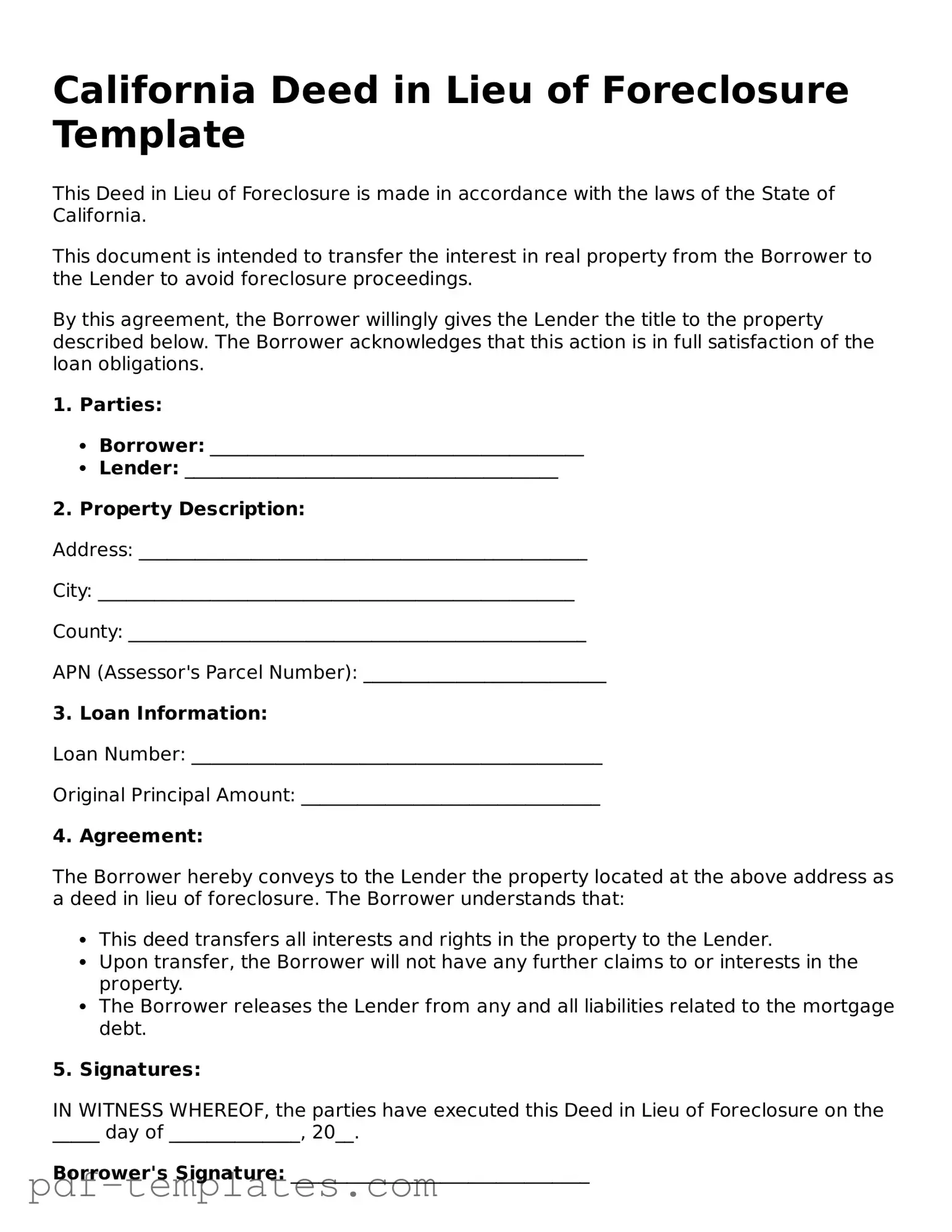A Short Sale Agreement is similar to a Deed in Lieu of Foreclosure in that both involve the transfer of property to the lender to avoid foreclosure. In a short sale, the homeowner sells the property for less than the amount owed on the mortgage, with the lender's approval. The homeowner can avoid the lengthy foreclosure process and potential damage to their credit score. Both options aim to provide a solution that is less damaging than foreclosure, allowing the homeowner to move on from the property more smoothly.
A Mortgage Release, also known as a Satisfaction of Mortgage, shares similarities with a Deed in Lieu of Foreclosure. In this case, the lender agrees to release the borrower from their mortgage obligations after the borrower has paid off the loan or when the property is sold. This document signifies that the borrower no longer owes money to the lender. Like a Deed in Lieu, it marks the end of a mortgage relationship, but it usually involves a sale or payoff rather than a direct transfer of property to the lender.
A Forebearance Agreement can also be compared to a Deed in Lieu of Foreclosure. This document allows a borrower to temporarily pause or reduce their mortgage payments due to financial hardship. While it does not involve the transfer of property, it serves as a way to prevent foreclosure. Both options aim to provide relief to the borrower, but a forbearance agreement typically allows the borrower to keep their home while they work through their financial difficulties.
For those interested in leasing commercial space, understanding the terms outlined in a Commercial Lease Agreement is crucial. This template provides a structured approach to setting forth the rental conditions and obligations. To gain access to a customizable form, explore the Texas Commercial Lease Agreement for your business needs.
A Bankruptcy Filing is another document that has similarities with a Deed in Lieu of Foreclosure. When a homeowner files for bankruptcy, it can stop foreclosure proceedings temporarily. In some cases, bankruptcy can lead to a discharge of debts, including mortgage obligations. While a Deed in Lieu involves voluntarily giving up the property, bankruptcy is a legal process that can provide various options for debt relief. Both documents are used to address financial distress and can lead to a resolution of mortgage issues.
